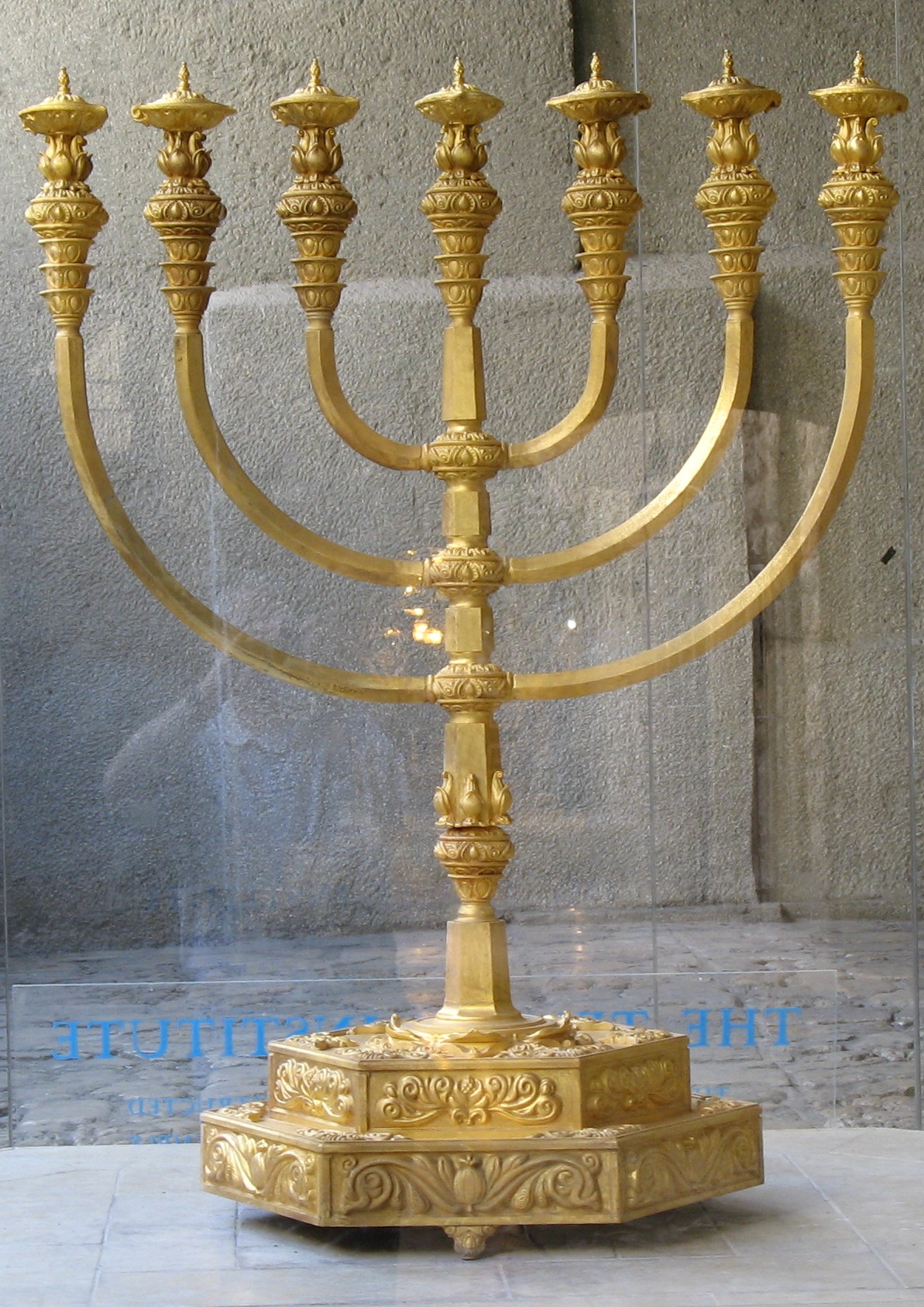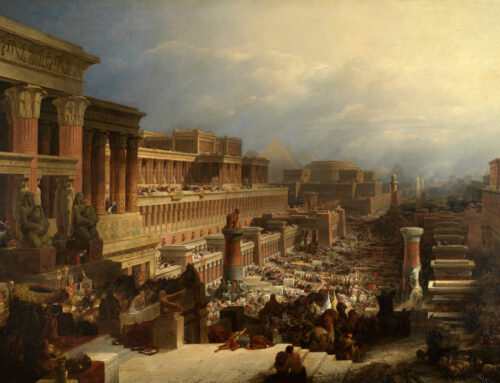
A reconstruction of the Menorah can be found in the Jewish quarter of the Old City of Jerusalem.
Photo: Commons wikimedia
The menorah is a seven-branched candelabra, one of the most important symbols of Judaism, and found on Israel’s coat of arms. Menorah means “lamp” in Hebrew and symbolizes the burning thorn bush in which the Lord revealed himself to Moses on Mount Horeb. A first Menorah was made in the tabernacle during Israel’s pilgrimage through the wilderness. This candlestick had lamps burning with olive oil and was used to light up the Holy Place, first in the tabernacle and then in the temple that King Solomon built in Jerusalem. The Babylonians invaded Jerusalem, destroyed Solomon’s temple and took away the sacred objects that were in it. These objects were later returned to Jerusalem when the second temple was built under Ezra and Nehemiah.
The Temple and the Candlestick
The Menorah is depicted on the Arch of Titus at Rome where it was taken by the Roman occupying forces following the destruction of the second temple in 70 AD. Today, no one knows where the candelabra is. Outside the Knesset in Jerusalem stands a tall seven-branched sculpture of the Menorah. The seven-branched Menorah is intimately associated with the temple and, according to Judaism, may not be used outside the temple. Instead, a variant with nine candles is used at the celebration of Chanukkah, or the temple Feast of Dedication. This eight-day festival is celebrated in memory of the Maccabean Revolt when Judas Maccabeus rededicated the temple at Jerusalem following its desecration by idolatry. In the Chanukkah candlestick, a Chanukiah, in addition to the eight candles there is a small candle holder, a shamash – servant. This candle is first lit and then used to light the other eight.
Mentioned in the Bible
The only time Chanukkah, or the Feast of Dedication is mentioned in the Bible is in the Gospel of John chapter 10:22: “Now it was the Feast of Dedication in Jerusalem, and it was winter. And Jesus walked in the temple, in Solomon’s porch.” Chanukkah lasts for eight evenings from the 25th of the Jewish month of Kislev. According to the Talmud, the festival is explained by a legendary miracle. There was enough oil for the temple lights for a single day, but God ensured that the oil lasted for the eight days needed to produce new temple oil. For this reason, Chanukkah lasts for eight days, and every evening candles are lit in memory of this miracle – one candle on the first day, two the second, and so on.



